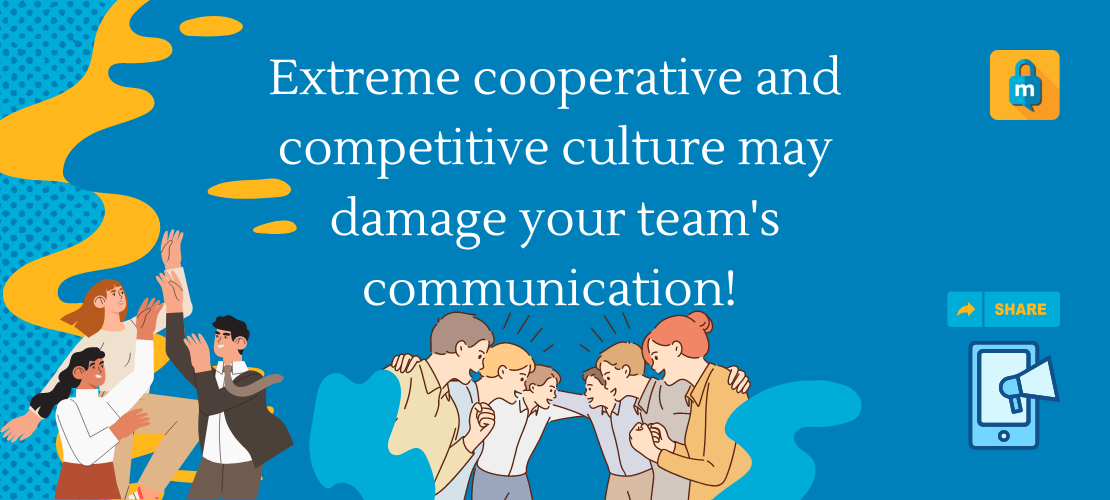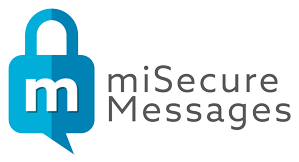
Extreme cooperative and competitive culture may damage your team's communication!
The previous blog introduces the team communication style, what team success looks like and what behaviors the team adapts to succeed. Within team dynamics, cooperation and competition impact how a group functions. Often group members may find themselves in a mixed-motive situation. One might believe that more cooperative traits in a team are fantastic. However, there are many negative drawbacks. More competitive characteristics may lead to successful performance. However, there are plenty of adverse effects on a team. In healthcare, there is no place for medical errors. However, miscommunication happens, and team culture impacts cross-department communication. Streamlining communication with a secure medical text app will minimize miscommunication across the department. Previously, the last few blogs touched on leadership, verbal and nonverbal communication, organizational rewards, etc. All of which are contingent on team culture and success.
Learn more about increasing team efficacy by understanding the following:
- cooperation
- competition
- personality
- organizational rewards.
Cooperation
Cooperation helps team members focus on a common goal and work together to achieve the shared vision. An example of a mixed-motive situation, a nurse must assist multiple patients across the department. A mixed-motive case will create selfish behaviors, and to solve the problem, have the team behave cooperatively. Members are more likely to act cooperatively when other members within a group behave cooperatively. The more trust the team members have in each other for putting in the same effort, the more committed the team becomes. A cooperative team will harmonize performance and communication across departments. Collaborative behaviors help build trust in the team relationship and supportive communication. Supportive communication will encourage team members to talk to each other and improves coordination, teamwork satisfaction, and overall team performance. Cooperation is crucial within healthcare because of uncertainties, urgent crises, and complex tasks. Team members can work interdependently and have less tension and fewer verbal confrontations and conflicts.
However, when a team is overly cooperative medical professionals can lose sight of the shared goals due to the focus on social relations. Here are the following drawbacks to extreme cooperation:
- conformity
- unhealthy agreement.
Conformity
When the team dynamic becomes highly cooperative, the result is cohesiveness. Improving communication, becoming self-rewarding, and social relations-which is a positive effect. However, the drawback is becoming internally oriented. When the team dynamic adopts conformity, every member must conform, and the team becomes resistant to outside influences and changes how the group operates.
Unhealthy Agreement
When members become cohesive, having social relations favor can disrupt decision-making. There will be fewer challenges within team decision-making, and the desire to reach an agreement shadows the motivation to create a solution. Here are the following symptoms of an unhealthy agreement:
- members struggle to communicate their honest opinions
- the team members harbor anger toward the team's decision-making
- team members privately agree the team is making a terrible decision
- the group disperses into subgroups that blame others for the team's problems.
Competition
When competitive behavior is extreme, there's a negative effect, such as individual goals blinding the members of the shared goals. As mentioned previously, mixed motives create selfish behaviors. Selfish behavior is when many choose competitive behaviors as a resort to the mixed-motive situation. Maximizing results and minimizing efforts and greedy behavior engenders a dominos effect on team members, making them resort to the same behaviors. The outcome is poor performance, lack of trust, conflicts, and hostility. Within healthcare, competition is high due to organizational rewards and leadership styles. Competitive individuals use task-related work to deliver speed; however, speed and accuracy are essential in healthcare. Simplifying workflow by streamlining clinical collaboration will increase team performance, and corporate incentives will motivate providers.
The explanation for competitiveness is culture, personality, and corporate bonuses. In the United States, individualism is the primary culture that promotes competition—valuing individualism, freedom, capitalism, and personal success. Thus, group tasks may seem restrictive of freedom and autonomy-resulting in a negative attitude towards teamwork. In a collectivistic culture most common within Eastern countries, there's a value in compliance and cooperation; the harmony of a team is essential, the culture expects conformity, and open conflicts are discouraged.
Personality
Competitive members are more likely to misperceive cooperative situations. Personality plays a significant role in how team members react and define success. Three personality types determine competitiveness:
- cooperators
- competitors
- individualists.
Cooperators
Cooperators are concerned with their own and the team's outcomes. Ensure the unit is victorious and the rewards are equitable amongst team members.
Competitors
Success is defined relative to others' performance rather than an individual's or team's goals. To a competitor, every situation is an opportunity to succeed; their performance is what matters most.
Individualists
For an individualist, their success is not relative to others' performance. Success corresponds to their personal goals, and they may or may not care about the group's success. Success is only applicable to individualists when they adopt a shared vision.
With the competitive personality types established, encrypted messaging may alleviate some competitive traits. It benefits healthcare providers by safely assigning tasks and responsibilities to the right providers and communicating the shared goals to the groups. Since healthcare professionals sometimes work autonomously, the solo duties assigned to competitive individuals should be for the individual before giving a collaborative assignment. The team will need to build a collaborative culture to perform successfully.
Organizational Rewards
The inability to share rewards is the outcome of unhealthy competition. They affect individuals and organizational units, such as departments working competitively to receive their share of the organization's resources. Corporate rewards are the solution and most effortless to change, encouraging teamwork and discouraging individual competition. Although personality and culture seem unalterable, organizations can use rewards to shift their behaviors to cooperative ones. The challenge is when competitive members establish their roles, renegotiating roles and coordination will build the team relationship and trust, reduce conflicts, and encourage collaborative behaviors. As stated previously, under competitors, competitive individuals may prioritize their individual goals over the group's goals resulting in goal confusion. There's less trust in team members and motives when there's goal confusion. Engendering conflicts, and reduced communication within a team. Communication in healthcare is vital in information exchange, -especially across departments; with reduced contact and increased competition, medical professionals may endanger a patient's life. In the end, balancing cooperation and competition is beneficial in establishing a growing team. Incorporating both will stimulate new solutions, growth, motivation, trust, and collaboration. Imagine how healthcare will look when a hospital masters the balance and implements a healthier system!

